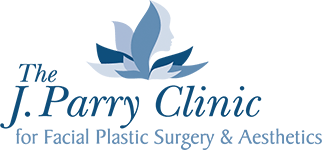If Rhinoplasty Has Weakened Your Nasal Structure, Revision Rhinoplasty Is the Solution

A rhinoplasty is a procedure that boasts a very high success rate. Most people who go in for a rhinoplasty are more than satisfied with the results. However, there are a few who may not share this perception.
There are those who want more work to be done after the initial procedure. These people may have aesthetic concerns or functional issues that came about after the first rhinoplasty surgery or weren’t solved at all initially. Then there are also potential problems related to facial symmetry and scarring.
Generally, the key complaints of a regular rhinoplasty have to do with either too much or too little being removed. Now, whatever the issue might be, the goal is to “fix” or “improve” the problems you’re facing with your nose, and that’s where a revision rhinoplasty can come in handy.
What Does a Revision Rhinoplasty Do?
A revision rhinoplasty is very similar to a normal rhinoplasty surgery, but it is designed to help fix things problems that may have been brought about by the first surgery. Your doctor will work to change and improve the shape, function, and contours of the nose.
The original rhinoplasty procedure may sometimes fail to deliver precise results. This can happen for a variety of reasons. A revision rhinoplasty entails carrying out minor corrections and fine tuning the results of the first procedure.
In some cases, a revision rhinoplasty can also be used to rectify functional issues that may have surfaced from the previous rhinoplasty. It is important to note that rhinoplasty is a very complicated procedure. Quite often, there can be changes that affect the nasal structure, which can lead to problems with the usual functions of the nose.
Recovery
After a revision rhinoplasty, you will experience some swelling and bruising. However, this won’t be as acute as what you experienced with the original rhinoplasty. Needless to say, the bruising and swelling disappear faster too.
The pain that comes with the swelling and bruising can be treated with painkillers prescribed by your doctor. However, intense activities need to be avoided for a few weeks after the procedure.
You will have sutures and a splint on your nose, which will eventually be removed. The removal will usually take place about a month or so after the procedure. The swelling can take more than a few months to subside. However, the bruising usually disappears in a matter of days.
Should You Go in for a Revision Rhinoplasty?
If you’ve developed issues with your nasal structure or have faced some complications as a result of the previous rhinoplasty procedure, a revision rhinoplasty may serve as a great solution. However, there is a lot of information that you’ll need to go through before you opt for the procedure.
Make sure that you talk to your doctor during a consultation so that you can ask any questions you have about the procedure and talk to him about your aesthetic goals. During this time, your doctor will also assess your nose so that he can develop a customized treatment plan that will suit your specific needs.
Contact Our Office
Revision rhinoplasty is the perfect solution for someone who wants to fix problems with their first rhinoplasty surgery. If you’re interested in learning more about the surgery, contact The J Parry Clinic to schedule your consultation today.
